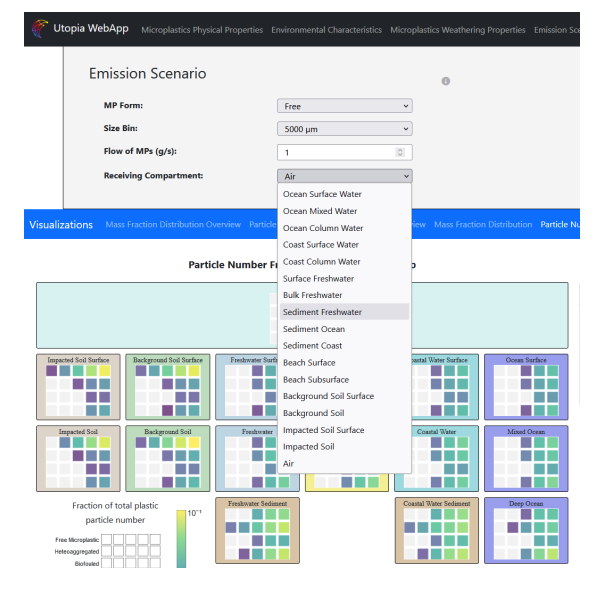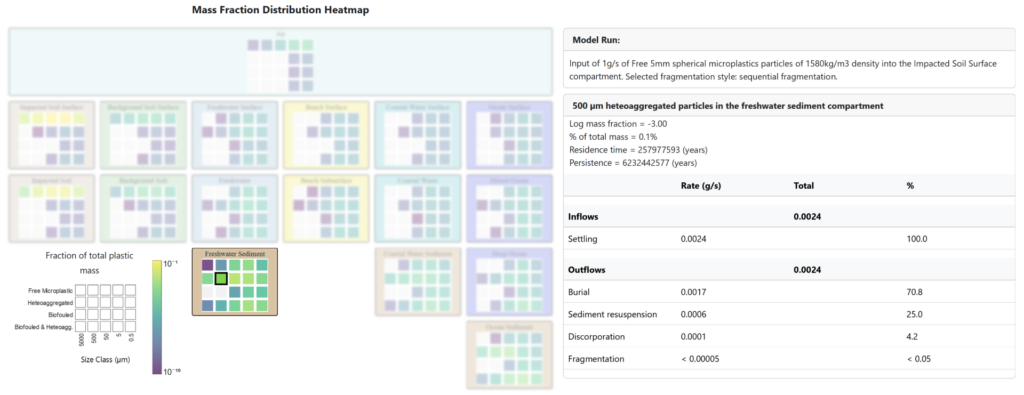
Utopia web app: Study Microplastics Fate And Transport On A Global Scale
InfraVis User
Prado Domercq, Matthew MacLeod
InfraVis Application Expert
Karen Larkina, Claudio Linhares, Amilcar Soares, Matteo Tomasini.
InfraVis Node Coordinator
Fabio Latino
InfraVis Nodes
Chalmers University, Linnaeus University
Tools & Skills
Backend Framework:
Flask (Python)
Data Processing Libraries:
NumPy (for numerical computations)
Pandas (for data manipulation and analysis)
Frontend Technologies:
HTML/CSS (for structure and styling)
JavaScript (for interactivity)
D3.js (for data visualization)
Keywords
About
Plastic pollution has emerged as a significant environmental concern, drawing increasing attention from the public and government agencies. In recent years, the presence of microplastics in aquatic and terrestrial ecosystems worldwide has become a critical focus of concern.
This pilot project aims to provide environmental researchers with a flexible model for analyzing the movement and behavior of microplastics in various ecosystems. The model divides the environment into multiple compartments and applies mathematical principles to track the distribution and transformation of microplastics over time. It can be adapted to account for different types and sizes of microplastics, offering a way to understand how these particles disperse and accumulate. The model’s outputs give insights into the steady-state behavior of microplastics across the system, helping researchers explore complex environmental dynamics in a structured and customizable way.
The tool enables users to adjust four different parameter sets to run the model and includes two interactive visualization sets. The first visualization set offers a global perspective of the entire system, allowing users to explore each compartment in greater detail. The second provides a more focused view, using heatmaps to display the distribution of microplastic particles by composition and size. Users can interact with specific data points to access deeper, more granular insights.
The visualization framework, developed as part of the Utopia project, enhances our ability to perceive and interpret the complex interactions within this system, offering a more intuitive understanding of microplastic dynamics across diverse environments.

